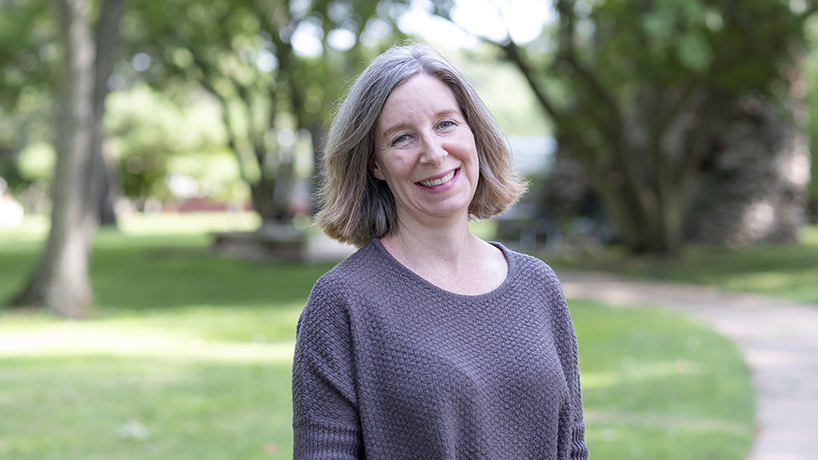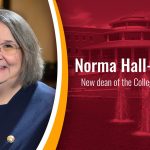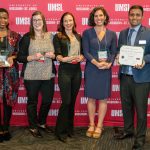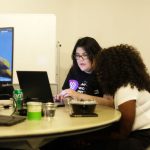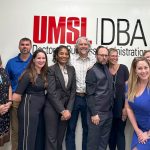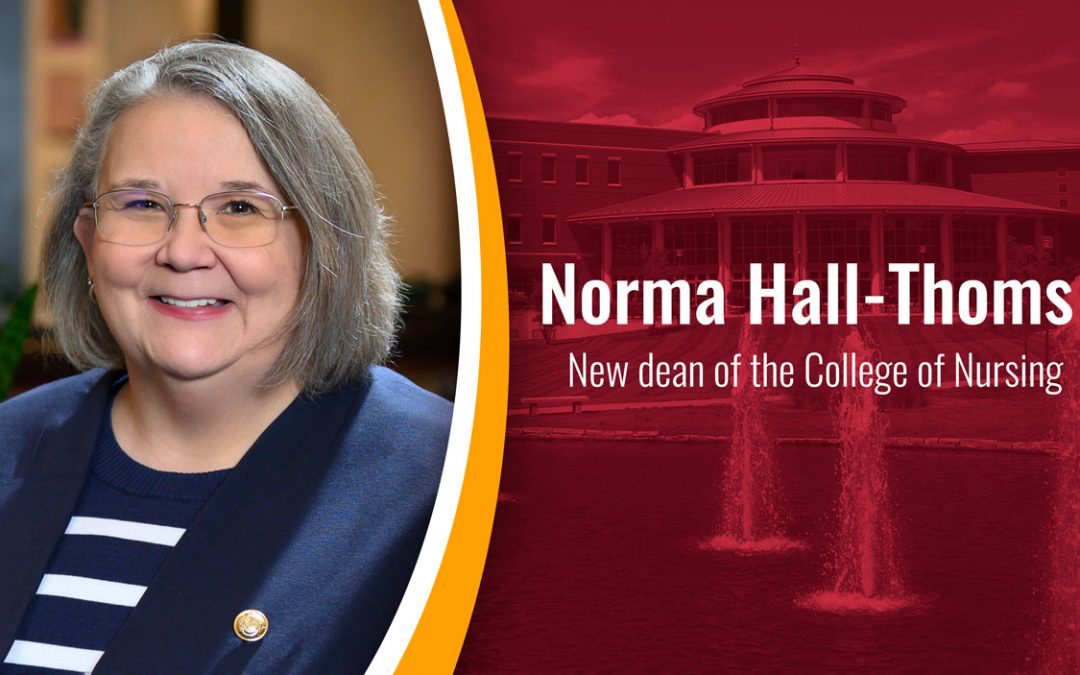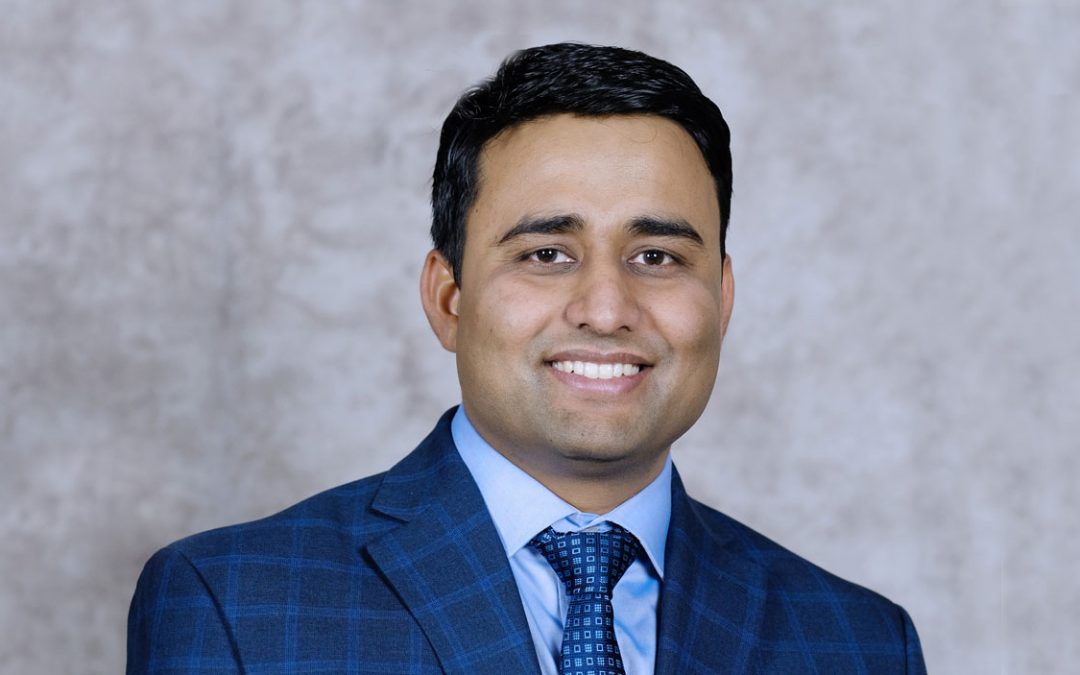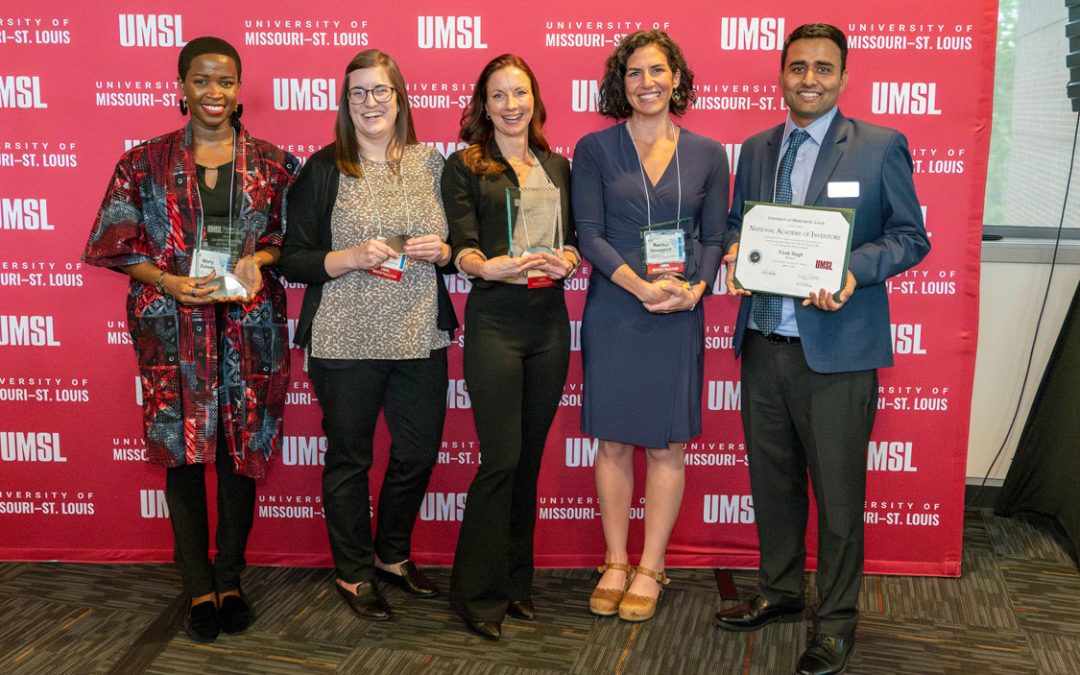
Brenda Pauley (left) demonstrates sign language as Michelle Parmentier (right) films on a tablet. The two College of Nursing DNP students are working on a multimedia-rich book about different aspects of nursing communication as part of the Graduate Student Nursing Association Digital Innovators Program. (Photos by August Jennewein)
Michelle Parmentier first learned the importance of nurse communication on the job.
She was leading a HIV and Hepatitis C population health program, and her navigation team had a patient with both the infectious disease as well as a cardiac condition who potentially needed major medical intervention.
Then, to make matters worse, the patient left the hospital against medical advice.
“She had a chronic leg wound,” Parmentier said. “She overheard a male clinician say, ‘Grandma got runover by a reindeer.’ The patient assumed the clinician was talking about her leg and reported feeling overwhelmed with shame. She hurried out of the hospital in embarrassment.
“Was the clinician even referring to the patient? Maybe not. She seemed young to be referred to as ‘grandma.’ One thing is certain. The clinician never would have uttered those words had he any idea of their impact.”
Through conversation with the patient, Parmentier’s team was able to convince her to return for the hospital.
That incident, and others throughout her career, spurred an appreciation for the importance of communication that stayed with Parmentier as she introduced initiatives to combat the stigma around those with infectious diseases and those who use illicit intravenous drugs. That interest also stayed with her as she enrolling in the University of Missouri–St. Louis Doctorate of Nursing Practice program in 2018.
DNP student Michelle Parmentier developed an interest in nurse communications during her professional that she’s turning into an opportunity for learning and instruction.
Last year, Parmentier got the chance to explore nurse communications in an entirely new way when the American Association of Colleges of Nursing named her team – herself and fellow DNP student Ann Corbin – as one of 15 selected for the 2020 Graduate Nursing Student Academy Digital Innovators Program.
The program, which was sponsored by Apple, intends to train current graduate nursing students who aspire to become nursing faculty in creative, multimedia approaches to instruction. The teams participated in bi-monthly sessions on different digital approaches that covered topics such as creating clips, preparing portfolios, augmented reality, podcasting and more.
Parmentier found herself especially impressed by sketch noting, a technique where students work on a tablet to draw concepts in addition to written notes.
“I have been made a believer because the added element of figuring out what symbol you’re going to use, how you’re going to draw something and how you’re going to put words and doodles together makes it really stick in your memory better,” she said. “I will absolutely use it in the classroom. I really like all the ways the program tries to help you make education become more alive.”
The groups also worked on multimedia-rich books that they presented at a virtual showcase at the beginning of August. Parmentier’s group’s book focuses on nurse communication in sticky situations and is aimed at undergraduate nursing students.
They cover topics such as how to communicate when a physician disparages you, giving a nursing deposition, how to communicate about vulnerable populations, such as those who cannot hear, who are HIV positive, who use IV drugs, who are the victim of sexual assault or have mental health issues.
The book contains videos, role playing situations and classroom exercises.
“In health care, we are always focused on the science; we’re always focused on technology,” Parmentier said. “But knowing how to talk to the person in front of you can have such an important effect on outcomes.
Parmentier and Corbin solicited chapters from a variety of experts such as nurses, social workers, an attorney and others. That number included DNP student Brenda Pauley, who contributed an article on communication with patients who are Deaf or have hearing loss.
Brenda Pauley decided to contribute a section to the book on communication with patients who have hearing loss or are Deaf with the help of her friend Zack Jodlowski, a teacher of the Deaf at the Special School District of St. Louis County.
“Not being able to hear can be a hidden disability, and a lot of clinicians tend to be nervous and uncomfortable when they realize, ‘Oh, this person can’t hear me,’” Pauley said. “Then they don’t know what to do. It seems to be an ongoing problem, too, because a lot of people who are Deaf don’t feel comfortable going to medical appointments or medical encounters. I felt that this was a vulnerable population that often gets overlooked, and I want to help make sure they have better experiences.”
Pauley included information such as common terms and concepts, how clinicians should enter the room when they have patients who don’t hear – leave the door open, enter slowly, introduce themselves, maintain eye contact for lip reading – Americans with Disabilities Act requirements such as providing an interpreter and asking their preferred communications method.
Zack Jodlowski, a teacher of the Deaf at the Special School District of St. Louis County, became a part contributor for some of Pauley’s videos, translating one into American Sign Language.
Through the process of creating her chapter, Pauley learned the differences between English and American Sign Language.
“You can’t assume that a Deaf person can read notes because the grammar of American Sign Language is so different than English,” she said. “The order of things is not similar. Unless they were specially trained in a school that really focuses on reading notes and lip reading, it’s very hard. It was eye opening to find out about that.”
Another eye-opening moment came when Pauley realized that oftentimes people who are Deaf don’t know their own medical histories because they are left in the dark about childhood illnesses.
“It was a great learning experience,” she said. “I’m so glad that I chose to do this because it educated me more about what needs to be done.”
That’s a sentiment shared by Parmentier and one she hopes future readers and students will tap into. When the text is complete, the group will be uploading it the AACN and publishing it on Apple Books.
Both Parmentier and Pauley see themselves teaching, at least part time, in their future practices.
“I’d like to see people use it for lessons or examples, and I’m sure that I will be using parts of the book, if not the whole book, during my career to help folks with communication,” Parmentier said. “It’s the biggest opportunity in health care.”

